Foreword / YouTube Video Review
The review on this website is a brief overview and summary of the objective performance of this speaker. It is not intended to be a deep dive. Moreso, this is information for those who prefer “just the facts” and prefer to have the data without the filler.
For a primer on what the data means, please watch my series of videos where I provide in-depth discussion and examples of how to read the graphics presented hereon.
Information and Photos
The DIY Sound Group 1099 is a DIY design from Ryan Bouma which is available in kit form from DIYSG. Here are some notes from the product page:
The Elusive 1099 has gained a cult following since it hit the DIY scene many years ago. ‘1099’ refers to the 10" woofers and the high sensitivity of 99db (2.83V/1m). Keeping parts in stock for this speaker was difficult, which is how it received the ‘Elusive’ name. And custom 10" black coned woofers for this speaker had to be manufactured by Eminence and the Celestion midranges are special ordered from the UK. Most people wanted the front baffles without roundovers, so I’m no longer getting them made with roundovers and they all have square edges.
These speakers were loaned to me by their owner, who built them from the kit. Note, speakers pictured are on stands built and loaned also by the owner.
CTA-2034 (SPINORAMA) and Accompanying Data
All data collected using Klippel’s Near-Field Scanner. The Near-Field-Scanner 3D (NFS) offers a fully automated acoustic measurement of direct sound radiated from the source under test. The radiated sound is determined in any desired distance and angle in the 3D space outside the scanning surface. Directivity, sound power, SPL response and many more key figures are obtained for any kind of loudspeaker and audio system in near field applications (e.g. studio monitors, mobile devices) as well as far field applications (e.g. professional audio systems). Utilizing a minimum of measurement points, a comprehensive data set is generated containing the loudspeaker’s high resolution, free field sound radiation in the near and far field. For a detailed explanation of how the NFS works and the science behind it, please watch the below discussion with designer Christian Bellmann:
The reference point for these measurements is just below the tweeter axis (approximately 15mm).
Measurements are provided in a format in accordance with the Standard Method of Measurement for In-Home Loudspeakers (ANSI/CTA-2034-A R-2020). For more information, please see this link.
CTA-2034 / SPINORAMA:
The On-axis Frequency Response (0°) is the universal starting point and in many situations, it is a fair representation of the first sound to arrive at a listener’s ears.
The Listening Window is a spatial average of the nine amplitude responses in the ±10º vertical and ±30º horizontal angular range. This encompasses those listeners who sit within a typical home theater audience, as well as those who disregard the normal rules when listening alone.
The Early Reflections curve is an estimate of all single-bounce, first-reflections, in a typical listening room.
Sound Power represents all the sounds arriving at the listening position after any number of reflections from any direction. It is the weighted rms average of all 70 measurements, with individual measurements weighted according to the portion of the spherical surface that they represent.
Sound Power Directivity Index (SPDI): In this standard the SPDI is defined as the difference between the listening window curve and the sound power curve.
Early Reflections Directivity Index (EPDI): is defined as the difference between the listening window curve and the early reflections curve. In small rooms, early reflections figure prominently in what is measured and heard in the room so this curve may provide insights into potential sound quality.
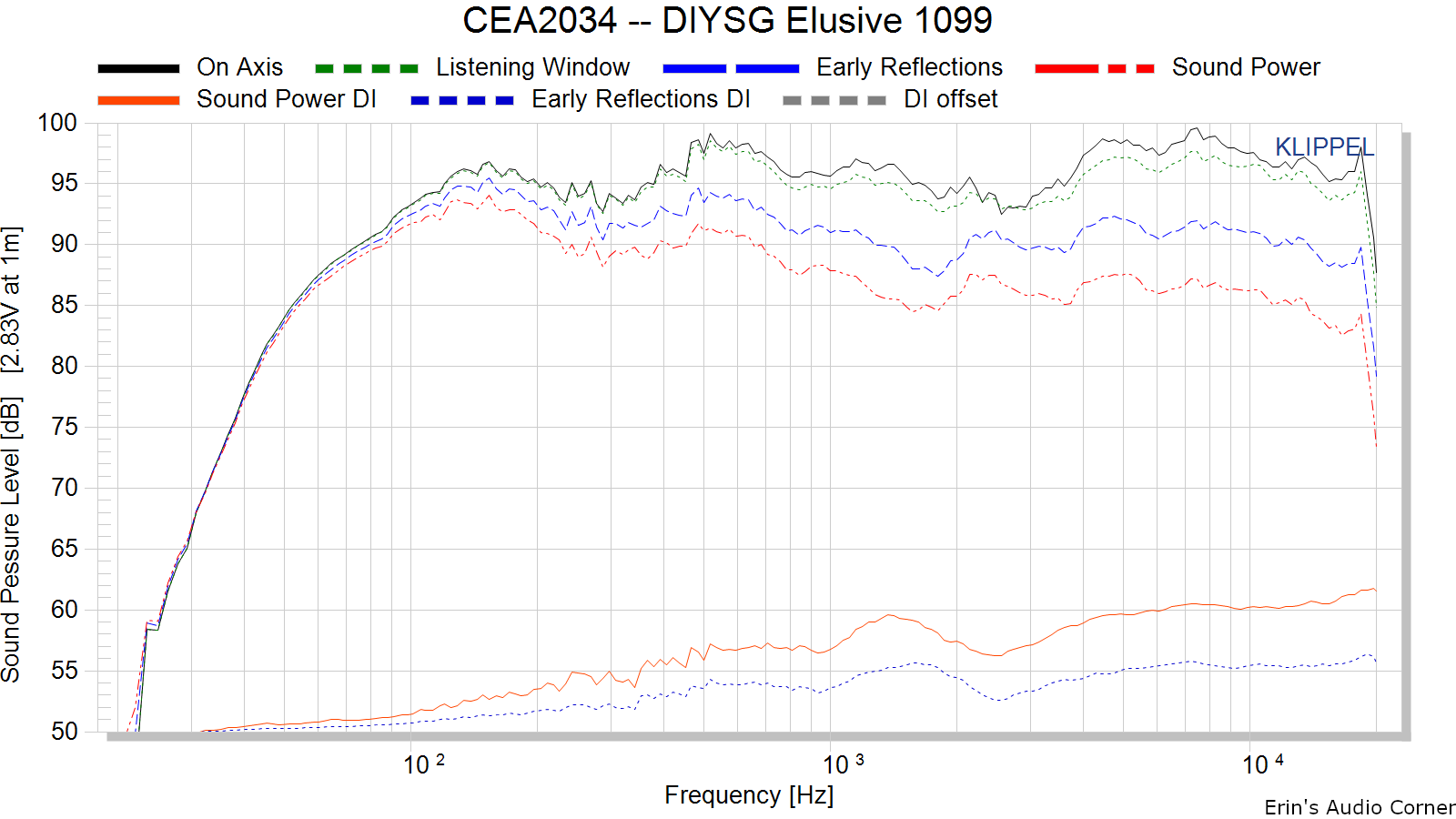
Early Reflections Breakout:
Floor bounce: average of 20º, 30º, 40º down
Ceiling bounce: average of 40º, 50º, 60º up
Front wall bounce: average of 0º, ± 10º, ± 20º, ± 30º horizontal
Side wall bounces: average of ± 40º, ± 50º, ± 60º, ± 70º, ± 80º horizontal
Rear wall bounces: average of 180º, ± 90º horizontal

Estimated In-Room Response:
In theory, with complete 360-degree anechoic data on a loudspeaker and sufficient acoustical and geometrical data on the listening room and its layout it would be possible to estimate with good precision what would be measured by an omnidirectional microphone located in the listening area of that room. By making some simplifying assumptions about the listening space, the data set described above permits a usefully accurate preview of how a given loudspeaker might perform in a typical domestic listening room. Obviously, there are no guarantees because individual rooms can be acoustically aberrant. Sometimes rooms are excessively reflective (“live”) as happens in certain hot, humid climates, with certain styles of interior décor and in under-furnished rooms. Sometimes rooms are excessively “dead” as in other styles of décor and in some custom home theaters where acoustical treatment has been used excessively. This form of post processing is offered only as an estimate of what might happen in a domestic living space with carpet on the floor and a “normal” amount of seating, drapes, and cabinetry.
For these limited circumstances it has been found that a usefully accurate Predicted In-Room (PIR) amplitude response, also known as a “room curve” is obtained by a weighted average consisting of 12 % listening window, 44 % early reflections and 44 % sound power. At very high frequencies errors can creep in because of excessive absorption, microphone directivity, and room geometry. These discrepancies are not considered to be of great importance.

Horizontal Frequency Response (0° to ±90°):

Vertical Frequency Response (0° to ±40°):

Horizontal Contour Plot (not normalized):
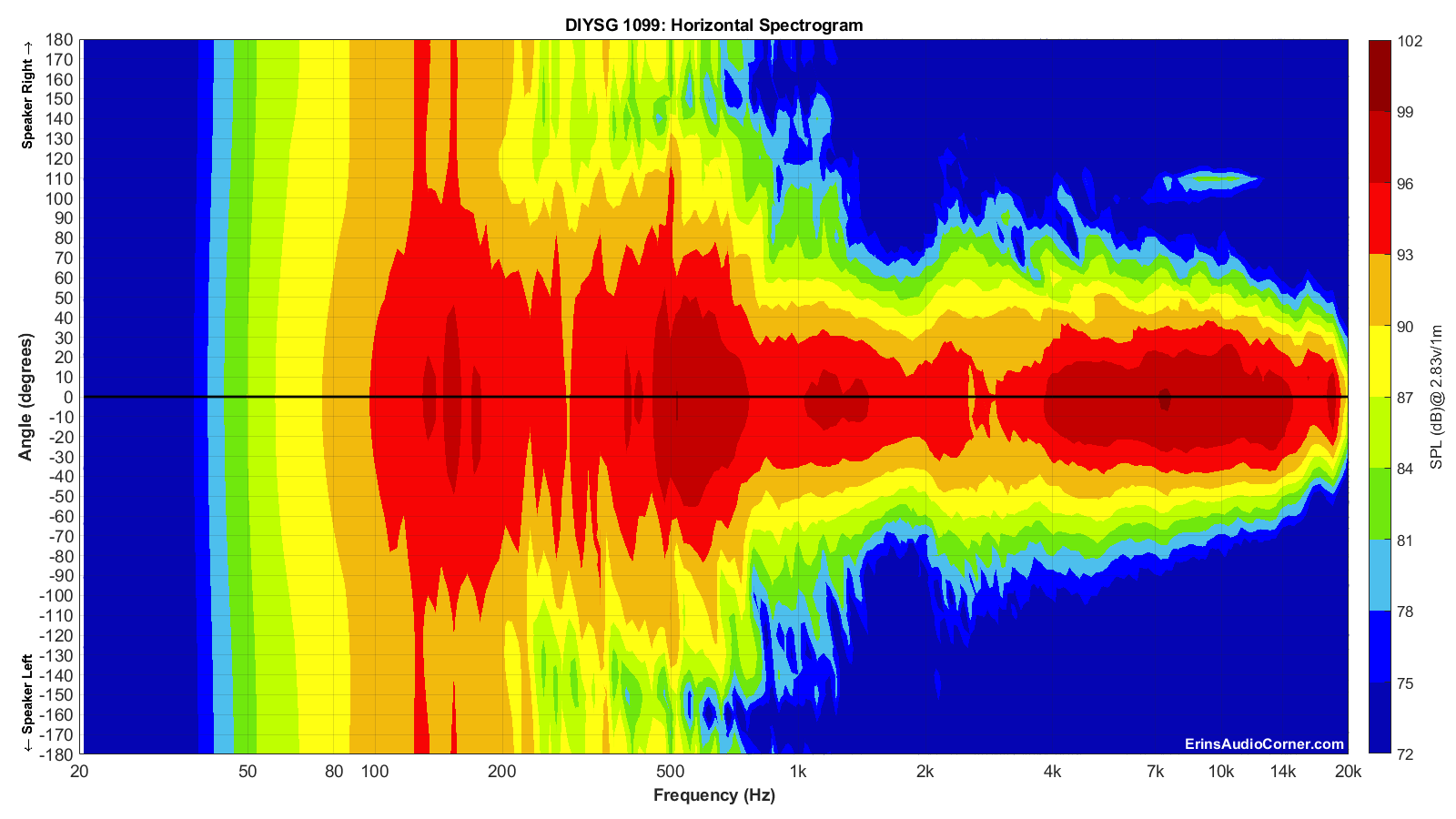
Horizontal Contour Plot (normalized):
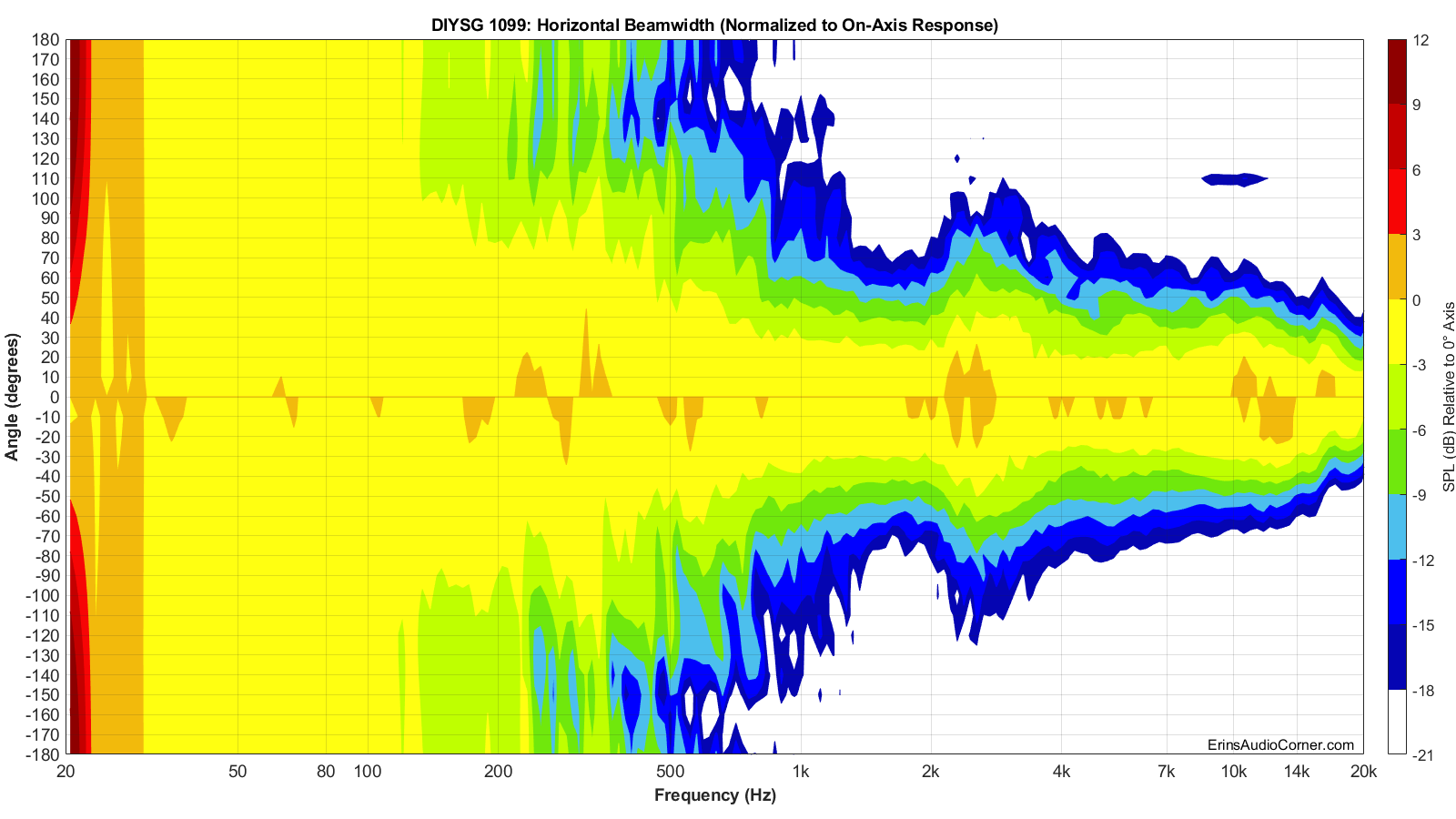
Vertical Contour Plot (not normalized):
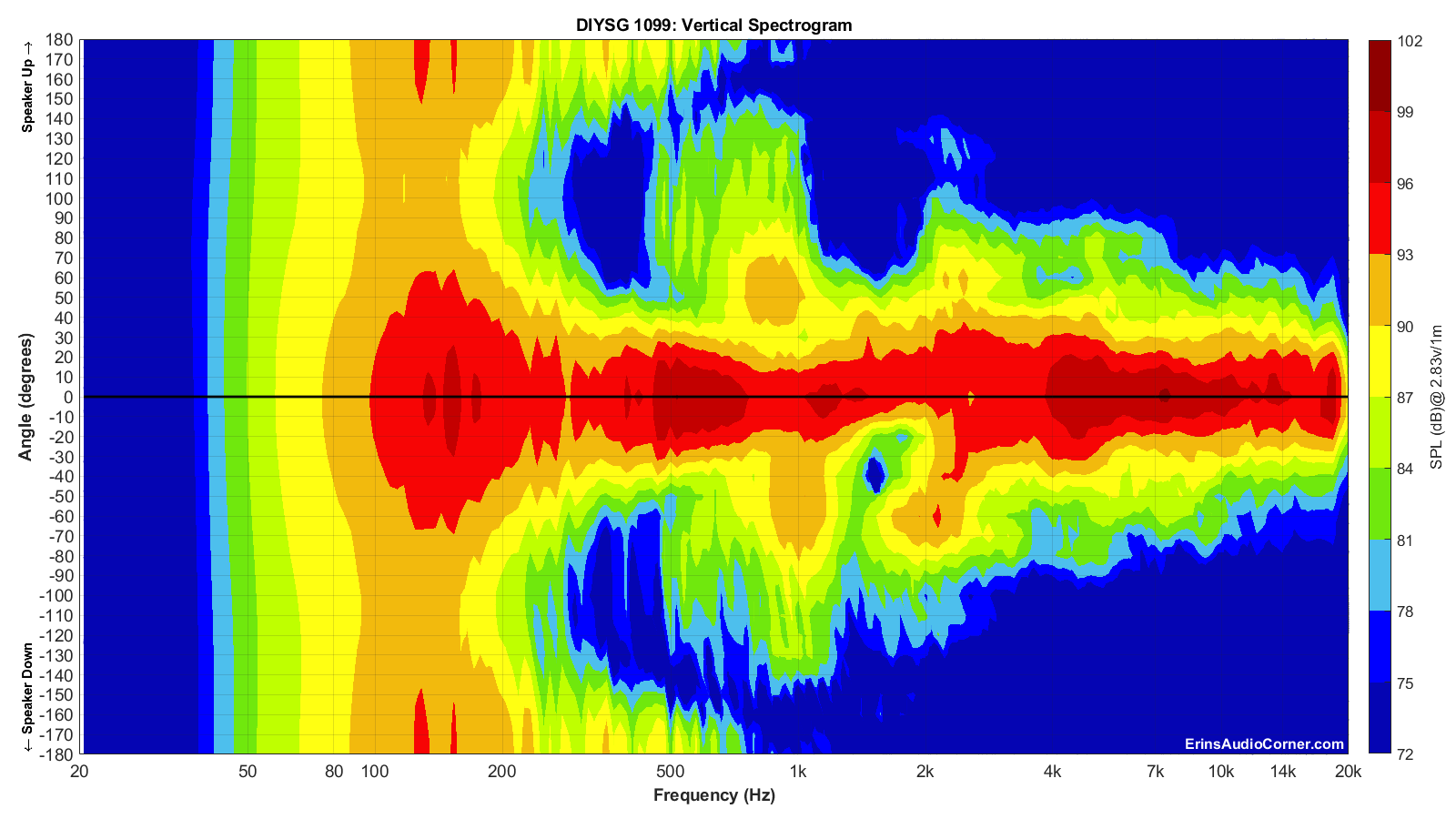
Vertical Contour Plot (normalized):
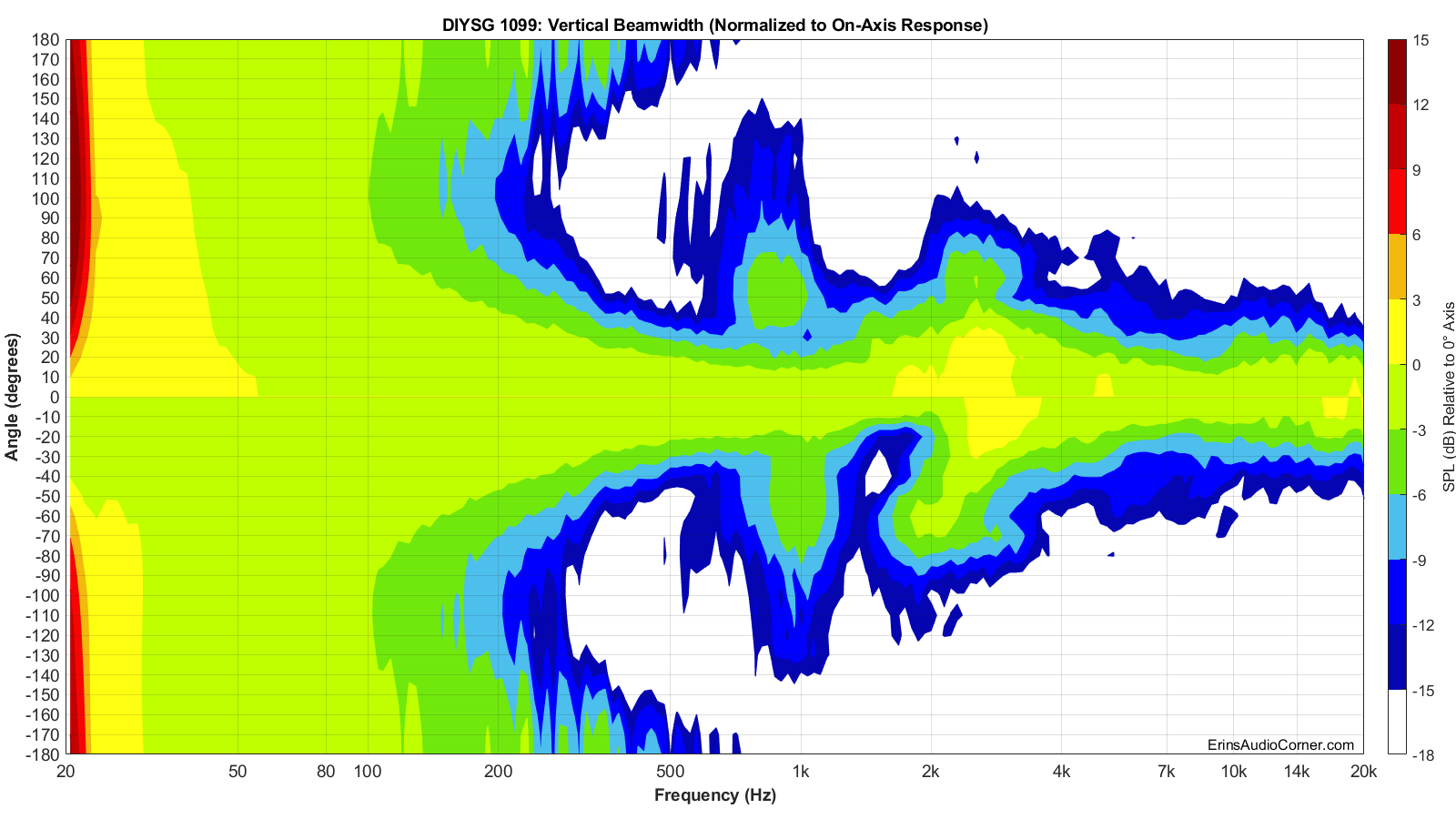
Additional Measurements
Impedance Magnitude and Phase + Equivalent Peak Dissipation Resistance (EPDR)
For those who do not know what EPDR is (ahem, me until 2020), Keith Howard came up with this metric which he defined in a 2007 article for Stereophile as:
… simply the resistive load that would give rise to the same peak device dissipation as the speaker itself.
A note from Dr. Jack Oclee-Brown of Kef (who supplied the formula for calculating EPDR):
Just a note of caution that the EPDR derivation is based on a class-B output stage so it’s valid for typical class-AB amps but certainly not for class-A and probably has only marginal relevance for class-D amps (would love to hear from a class-D expert on this topic).

I was curious what would happen if you increased the voltage to 2.83vRMS so I measured the impedance at this voltage level and plotted the EPDR for it and 0.10vRMS below. The two are identical and therefore you see only what appears to be one set of data in the graph below.
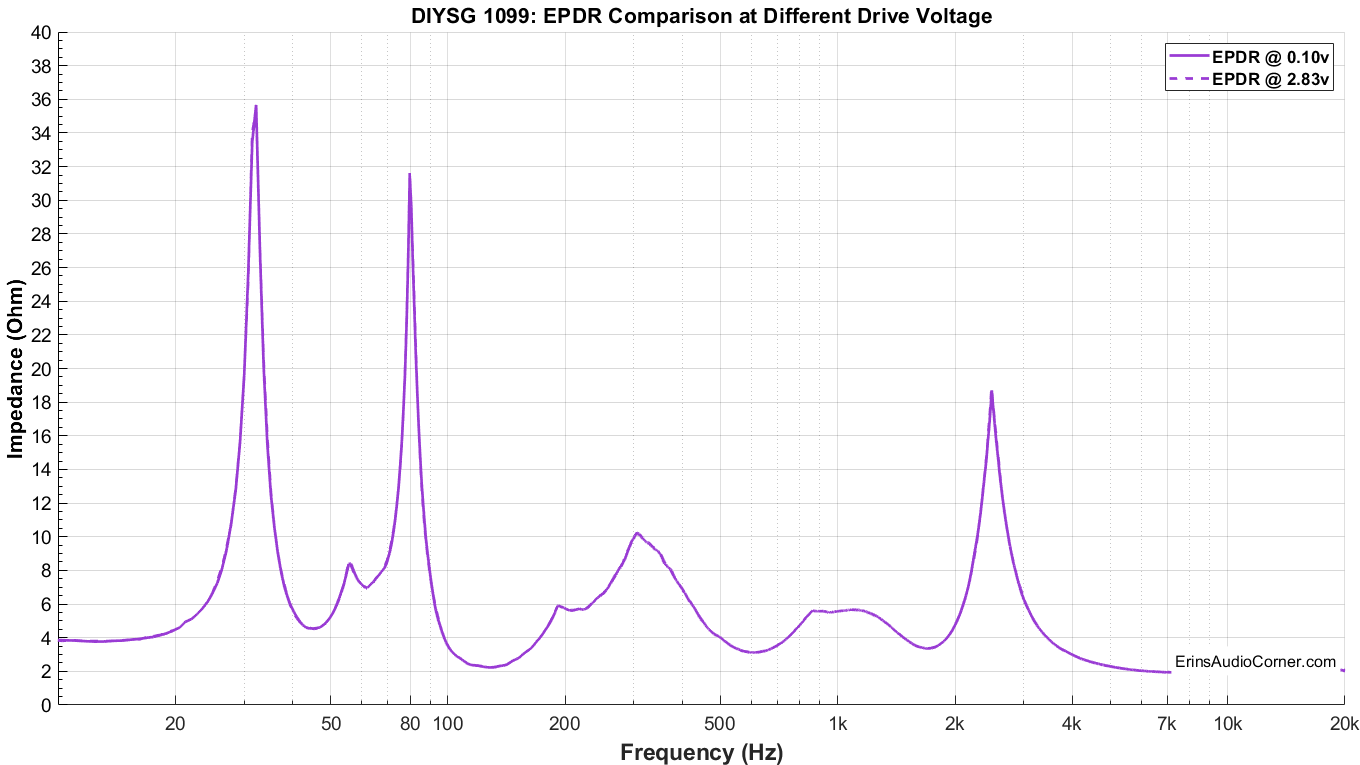
On-Axis Response Linearity
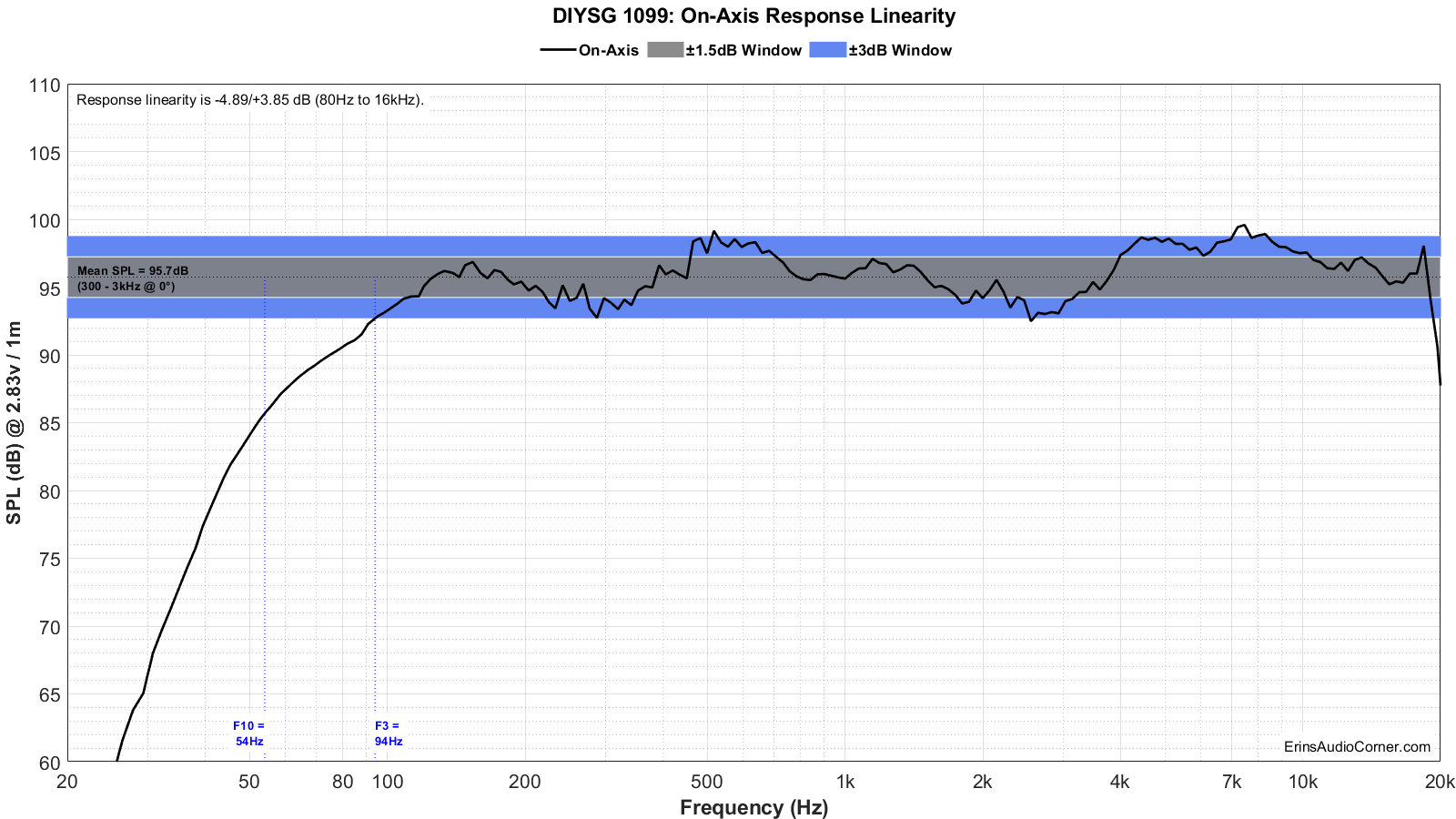
“Globe” Plots
These plots are generated from exporting the Klippel data to text files. I then process that data with my own MATLAB script to provide what you see. These are not part of any software packages and are unique to my tests.
Horizontal Polar (Globe) Plot:
This represents the sound field at 2 meters - above 200Hz - per the legend in the upper left.
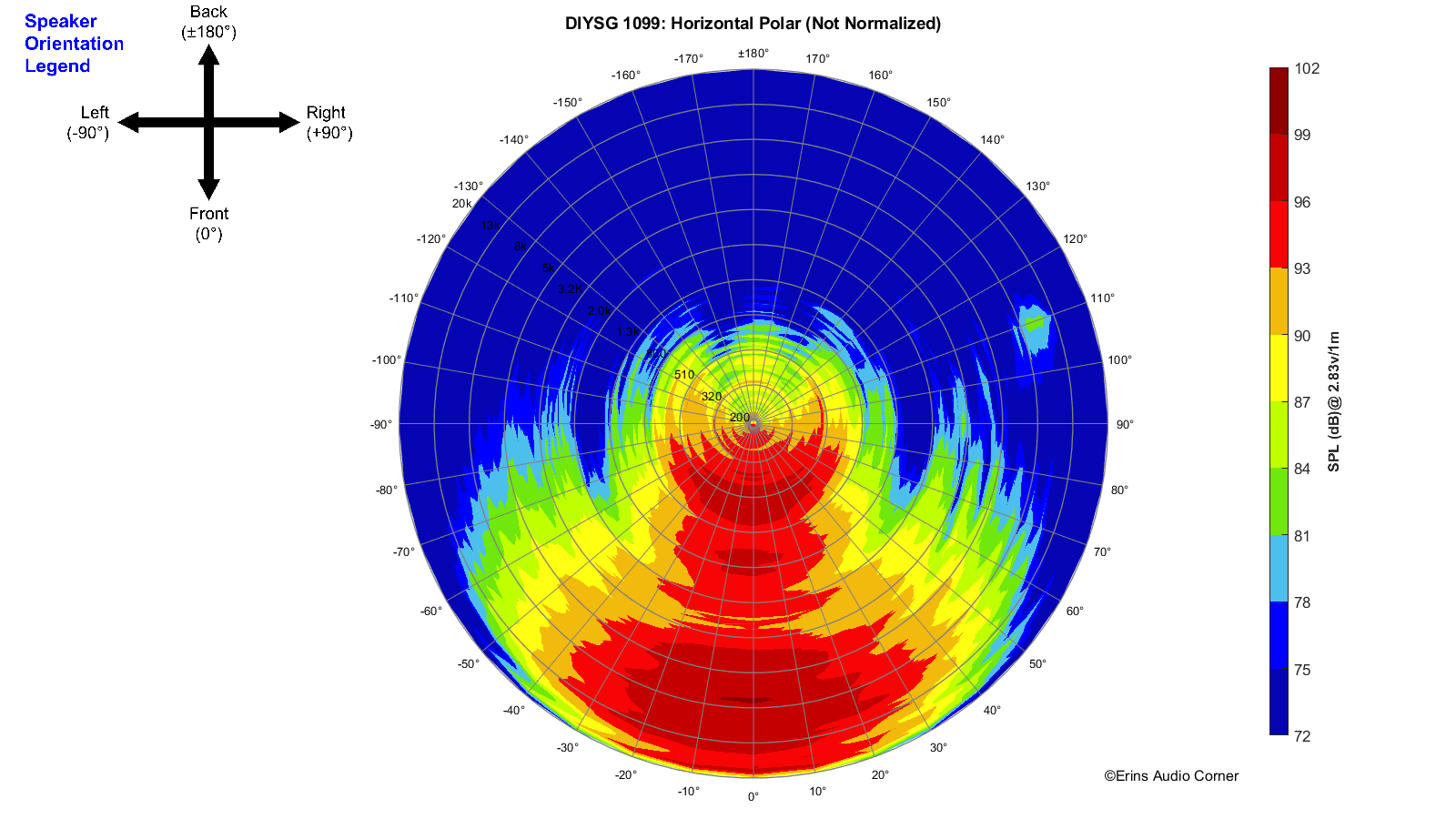
Vertical Polar (Globe) Plot:
This represents the sound field at 2 meters - above 200Hz - per the legend in the upper left.
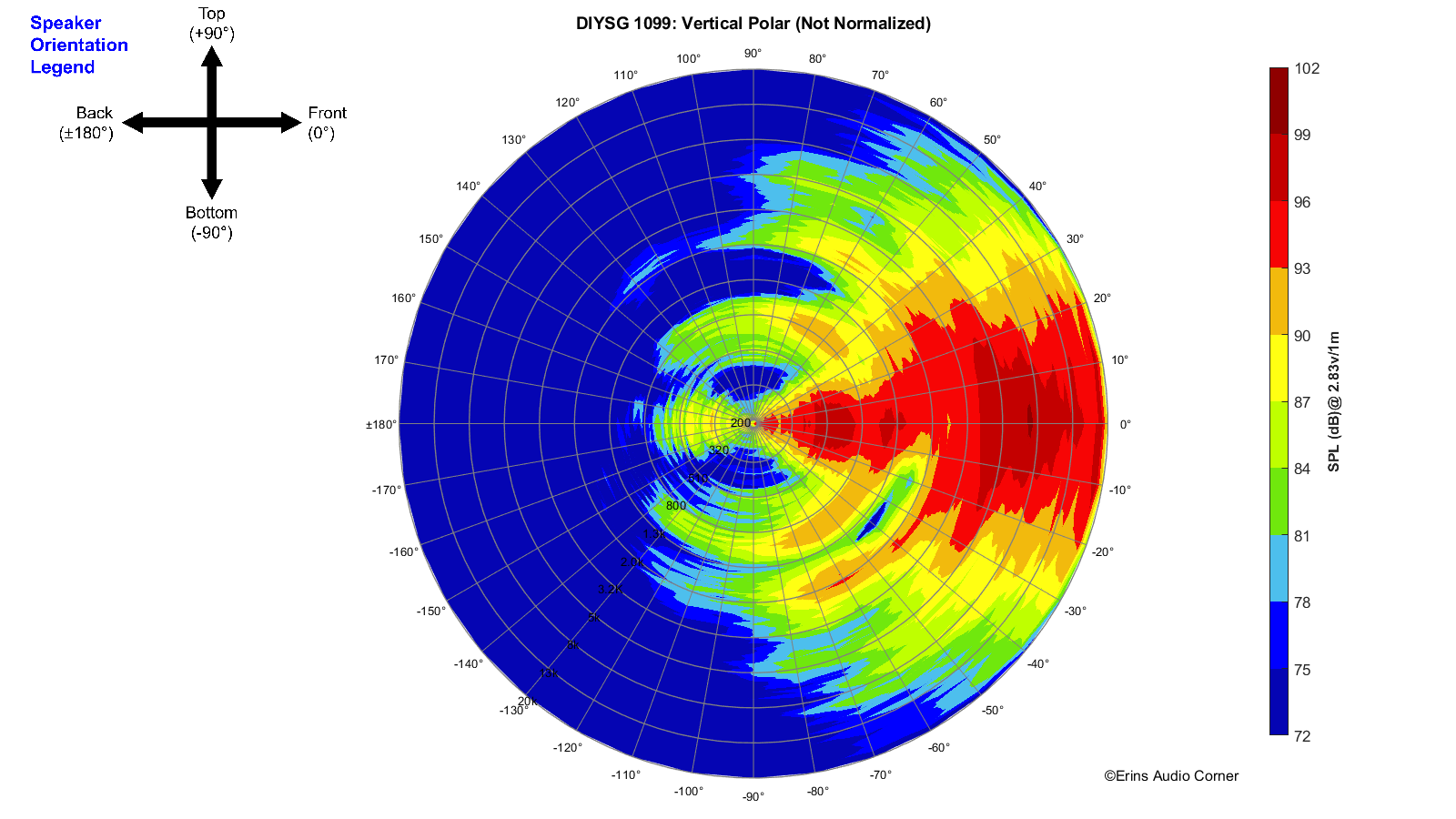
Harmonic Distortion
Harmonic Distortion at 86dB @ 1m:
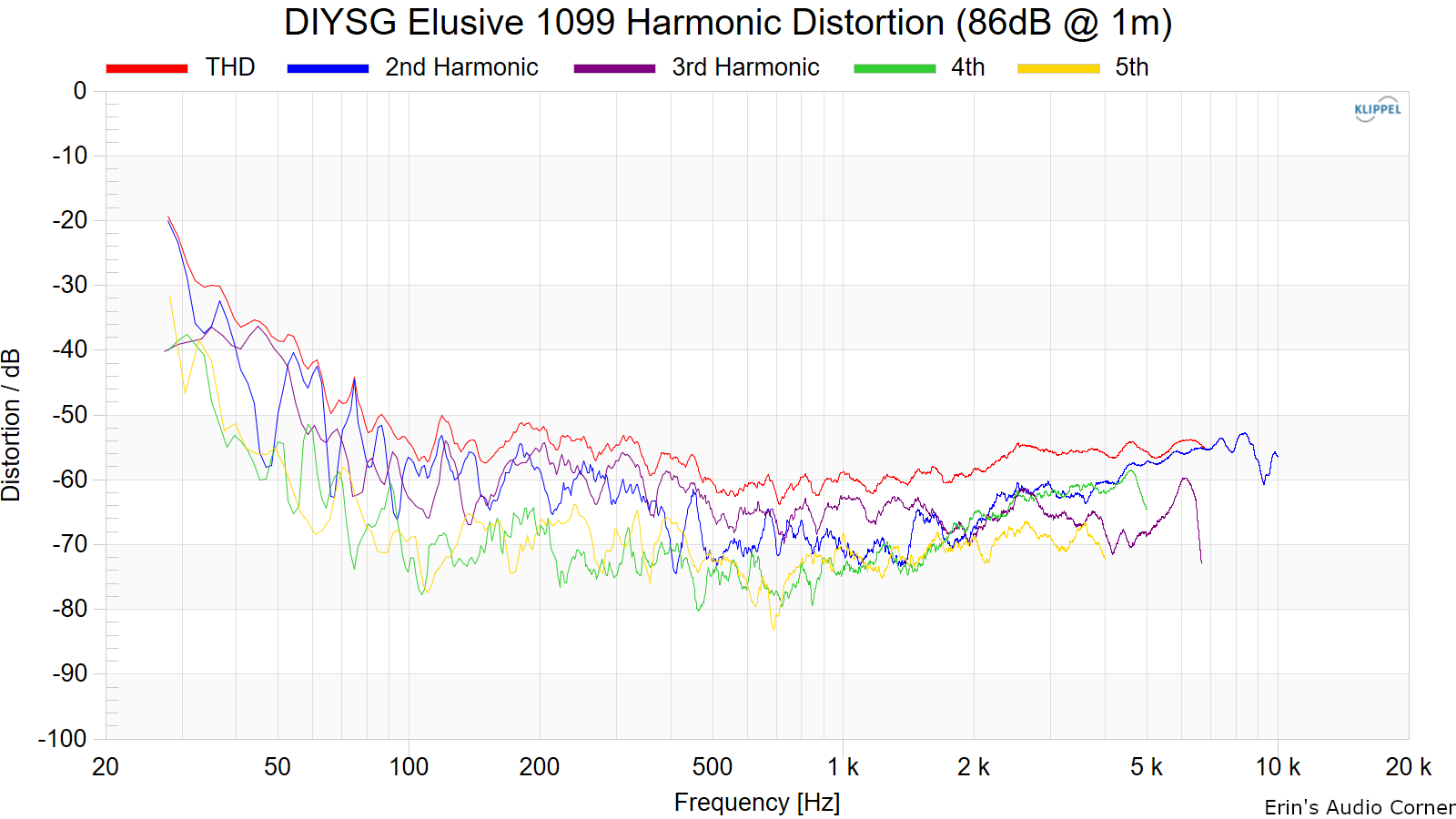
Harmonic Distortion at 96dB @ 1m:

Harmonic Distortion at 102dB @ 1m:
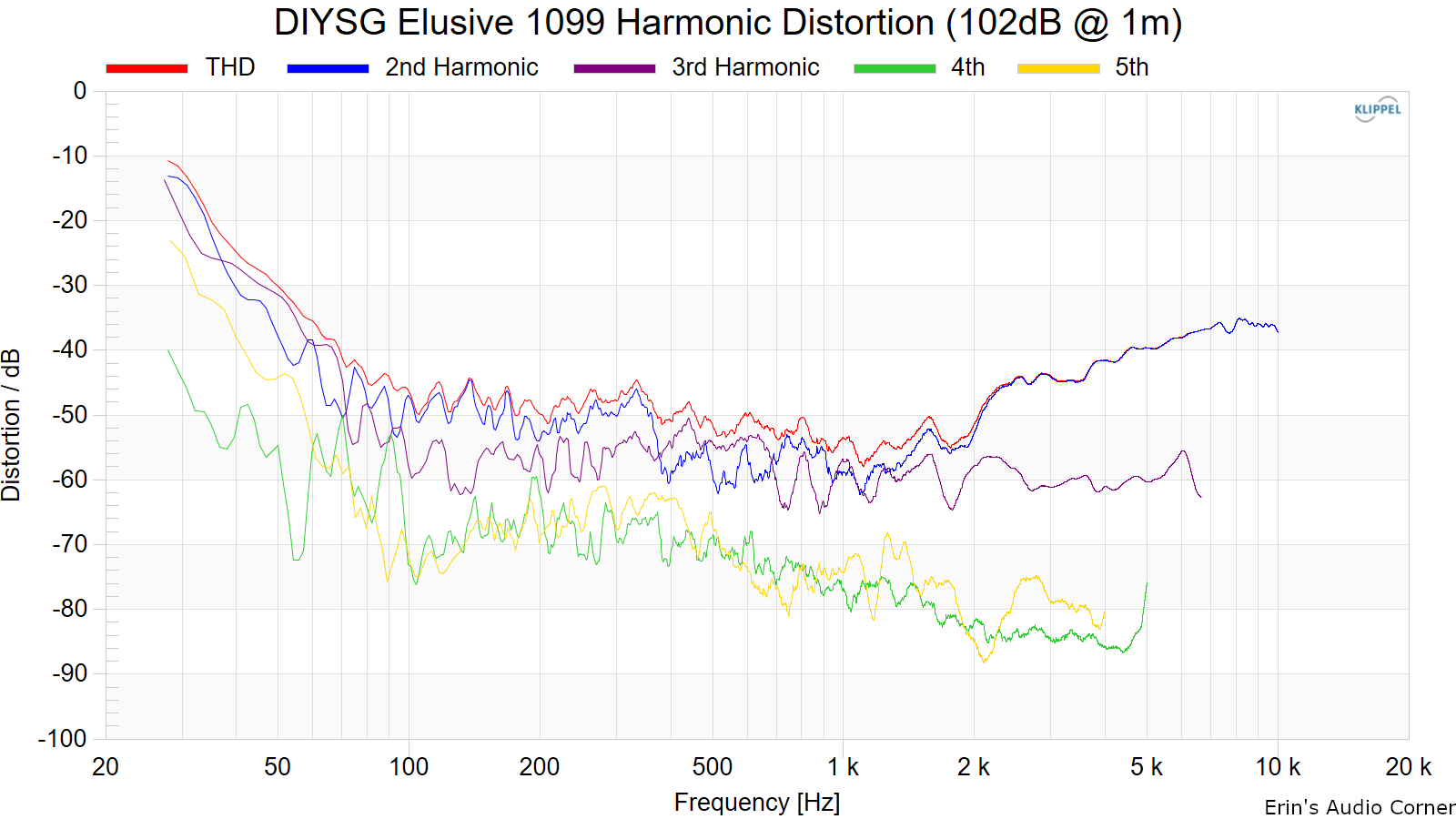
Dynamic Range (Instantaneous Compression Test)
The below graphic indicates just how much SPL is lost (compression) or gained (enhancement; usually due to distortion) when the speaker is played at higher output volumes instantly via a 2.7 second logarithmic sine sweep referenced to 76dB at 1 meter. The signals are played consecutively without any additional stimulus applied. Then normalized against the 76dB result.
The tests are conducted in this fashion:
- 76dB at 1 meter (baseline; black)
- 86dB at 1 meter (red)
- 96dB at 1 meter (blue)
- 102dB at 1 meter (purple)
The purpose of this test is to illustrate how much (if at all) the output changes as a speaker’s components temperature increases (i.e., voice coils, crossover components) instantaneously.
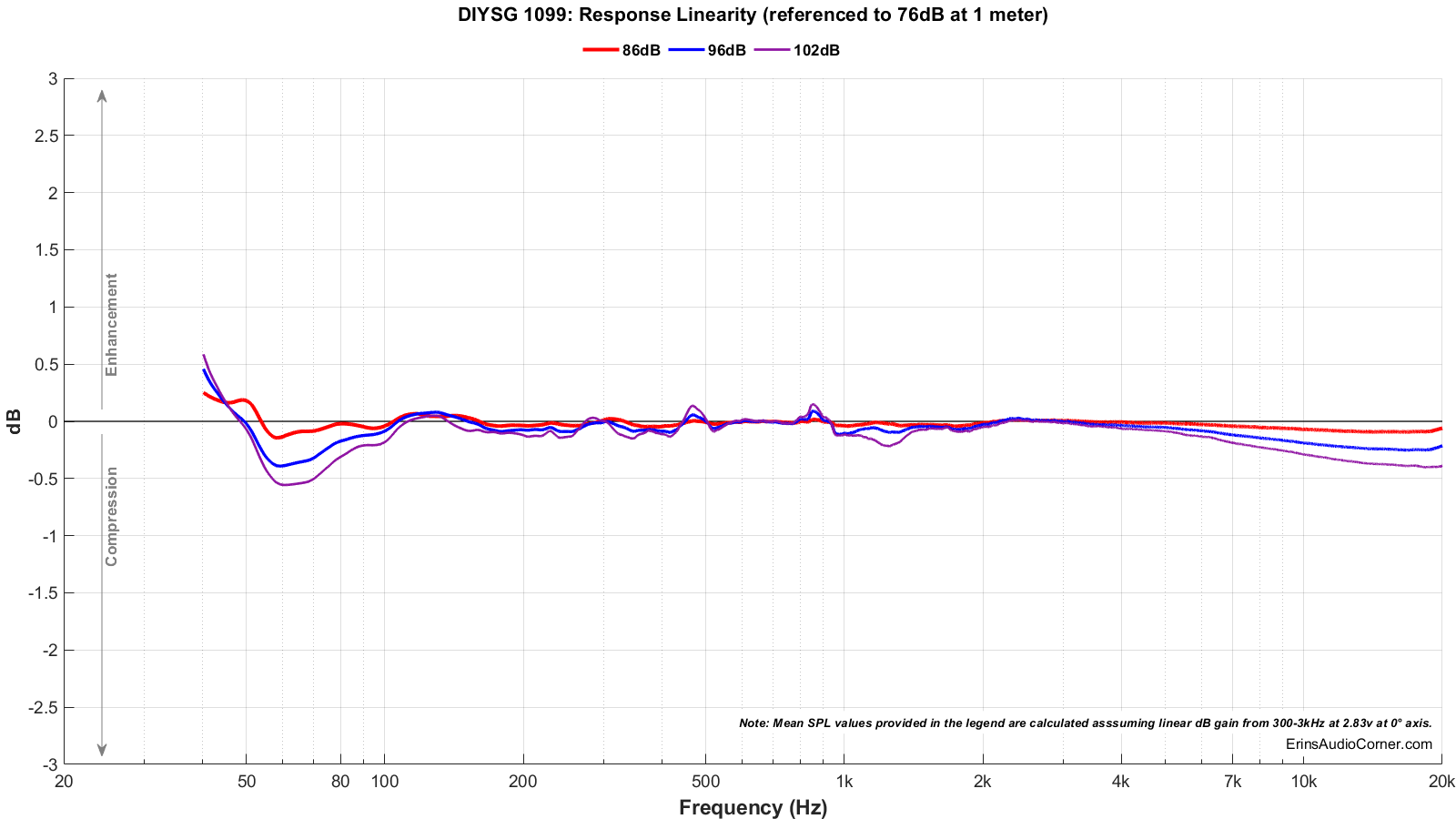
Long Term Compression Tests
The below graphics indicate how much SPL is lost or gained in the long-term as a speaker plays at the same output level for 2 minutes, in intervals. Each graphic represents a different SPL: 86dB and 96dB both at 1 meter.
The purpose of this test is to illustrate how much (if at all) the output changes as a speaker’s components temperature increases (i.e., voice coils, crossover components).
The tests are conducted in this fashion:
- “Cold” logarithmic sine sweep (no stimulus applied beforehand)
- Multitone stimulus played at desired SPL/distance for 2 minutes; intended to represent music signal
- Interim logarithmic sine sweep (no stimulus applied beforehand) (Red in graphic)
- Multitone stimulus played at desired SPL/distance for 2 minutes; intended to represent music signal
- Final logarithmic sine sweep (no stimulus applied beforehand) (Blue in graphic)
The red and blue lines represent changes in the output compared to the initial “cold” test.
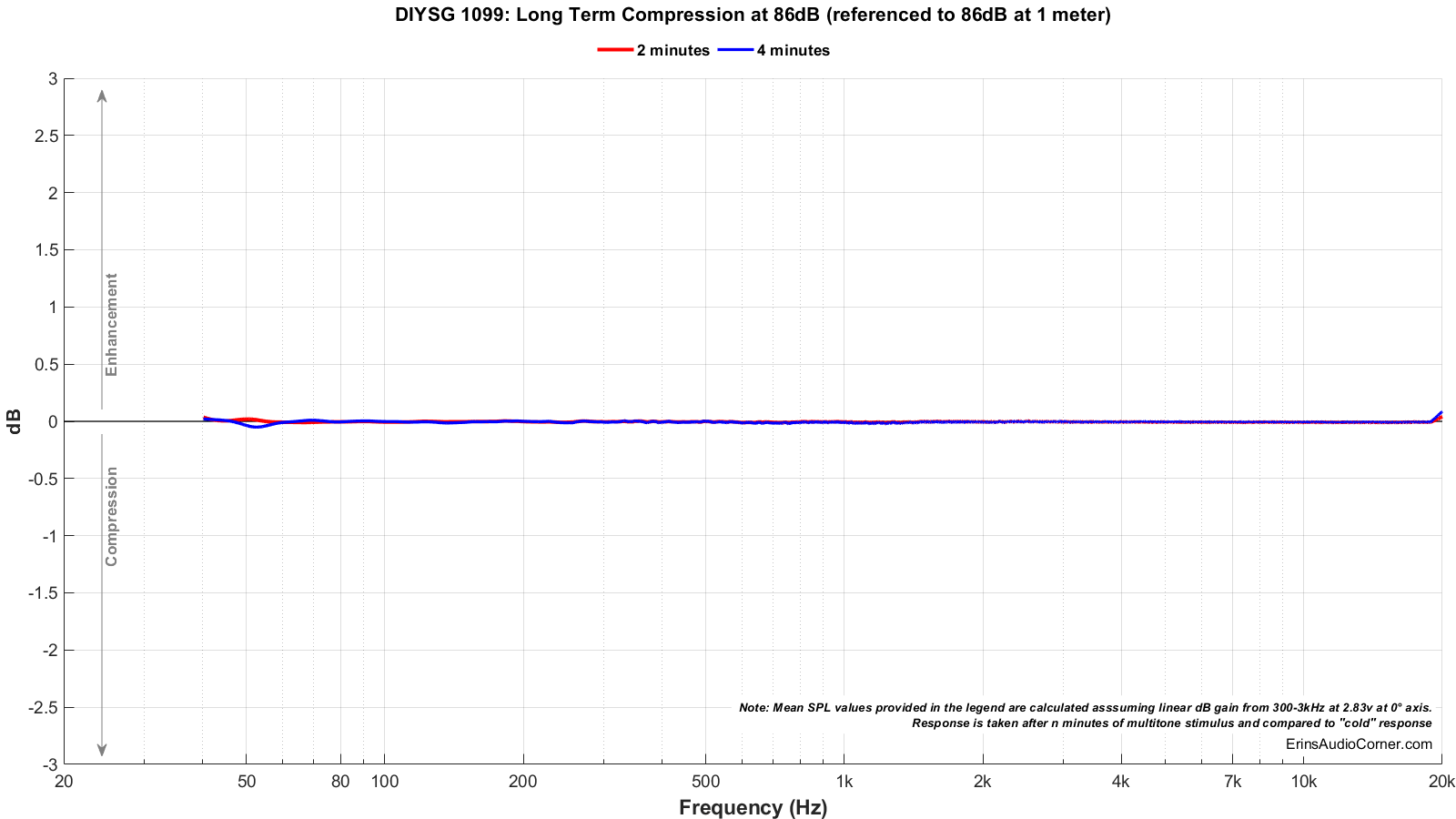
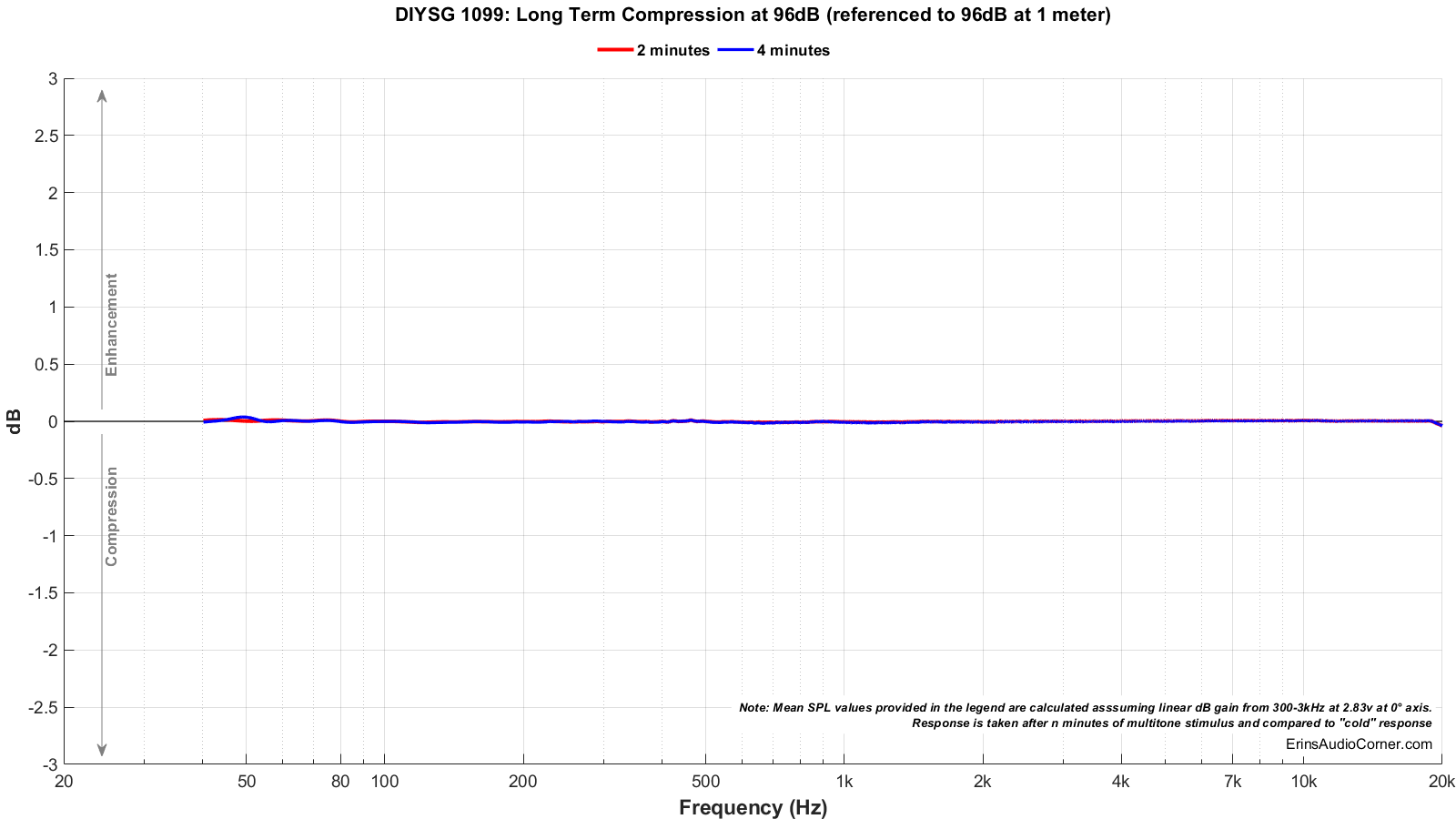
Parting / Random Thoughts
If you want to see the music I use for evaluating speakers subjectively, see my Spotify playlist.
- Subjective listening was done in my living room at a listening distance of about 4 meters from the speakers. The speakers were placed from the wall behind them about 1 meter and many meters from sidewalls. Power was provided via Parasound HINT-6 (rated ~160w x2 @ 8ohm, 240w x2 @ 4ohm). SPL levels generally remained in the 85dB region but I did occasionally increase the output level to test the limits (more on this below). Aiming varied from on-axis to cross-firing by about 20 degrees and toed-out by about 10 degrees. Generally, I preferred cross-firing by about 10 degrees. No DSP was added; my goal is to assess the performance of the speaker without “room correction” or other DSP in the signal path (other than some tonal adjustments; noted below).
- Rolled off below 100Hz? No midbass (definitely no kick). Definitely needs a subwoofer.
- Lower vocal regions sound thin.
- Can be sibilant (Kodachrome).
- Hi-hat a bit strong (2-3dB) (Kodachrome).
- Soundstage isn’t wide. Low/no envelopment.
- Strong around 400-600Hz (Everybody Wants to Rule the World).
- Free Fallin - left guitar around 50 seconds moves around the soundstage from just outside the speaker to at the speaker; should stay put; radiation mismatch ?
First thing is first: these speakers can flat out hammer. At my listening distance of about 4 meters, I had my Parasound HINT-6 not even full tilt and the output measured in the seated position was 111dB. For effect…. one-hundred-eleven. That’s insane. At this level, I literally was wearing hearing protection (gun suppression). Even with the suppressors on, the music at my ears was incredibly loud. This is “wake the neighbors up on the other end of town” loud. If your seated position is within a few meters of the speakers then these, honestly, would probably be overkill. Though, one could potentially run these off an AVR and still have plenty of headroom to wake the dead.
The dynamic capability of these speakers is - as expected - quite high. With a measured (anechoic) sensitivity of about 96dB @ 2.83v/1m, they have the ability to take a little power and make a lot of sound. Along the same lines, these speakers suffer zero compression with even continuous playback of 96dB multitone stimulus featuring a crest factor of 12dB (in other words, these speakers can play loud for a while and not change in response). Of course, with high sensitivity comes a trade-off and in this case it is namely in low frequency. Despite their size and use of dual 10-inch woofers, these speakers don’t have much about at all below 100Hz. Expect to use a subwoofer at least as high as the typical 80Hz and expect that you may need to go a bit higher to properly sum to these speakers and provide the same sort of SPL levels from low frequencies to high frequencies.
The horizontal radiation window is rather narrow compared to conventional speakers, especially dome tweeters on a flat baffle design. Where those designs are typically capable of a radiation pattern as much as ±70°, these speakers are closer to the ±30° window. This, too, is another tradeoff of the waveguide-design where you gain more controlled dispersion with higher sensitivity at a detriment to wide dispersion. Personally, I prefer a wider soundstage and I prefer the interaction with the side walls as it increases the overall sense of soundstage width. But not everyone likes that and - aside from personal preference - the room may play better to a narrower directivity speaker. This is precisely the kind of thing that takes experience and data to begin to resolve. But, once you have had enough experience with measured speakers, you can begin to correlate to the relationship between soundstage width, radiation patterns and what you like.
While the measurements validate some issues I heard - namely the high frequency boost and the midrange issues - the overall result was pleasing. For home theater junkies, I believe equalization will be used which will/can help resolve some issues regarding overall tonal balance they may find displeasing. Still, unlike the DIYSG HTM-12v1 I tested recently, this speaker will not benefit as much from equalization due to the asymmetry in the horizontal radiation pattern; meaning that what is EQ’d on-axis will also impact the off-axis sound and since these two do not always follow the same form in response, some issues cannot be “EQ’d out”.
Using the tonal balance knobs on the Parasound HINT-6, I decreased the treble and found that to help remedy the sibilance. Though, the next step for me would definitely be to work on the midrange trough; either by using a wide-Q filter centered at about 300Hz to bring this up and/or using a filter with a Q of about 3, centered at about 700Hz and cut this by 2-3dB to flatten this peaky region out.
As for placement, as I mentioned above, I personally found that toeing in these speakers by about 10° yielded the best overall response. However, if you do use DSP or something of the sort to alter the frequency response, you may find a different axis response better suits your tastes/needs. So, it is recommended to take time to listen at different angles. Even more so, take time to run your room correction software at different speaker aiming angles to find what you prefer most. Aside from the horizontal aiming, though, the vertical position of your ears to the speakers should be in-line with the midpoint between the tweeter and midrange drivers. Specifically, it appears the acoustic center (vertically) is just below the tweeter line. I would not recommend listening more than ±10° beyond this axis as the vertical response begins shifting a good bit from nominal.
At any rate: these speakers get loud and are a blast to listen to. Would I consider them high-fidelity? No. But I don’t think anyone who is looking at these speakers and looking at the price for all the parts to build them are expecting symphony-hall-esque reproduction. What you do get is a great time, a speaker that will plain knock your socks off and a grin on your face. And with a little bit of EQ you can take what I would consider “good” response to “solid” response. How’s that for subjective?! That’s it for me! Peace!
Support / Donate
If you like what you see here and want to help me keep it going, please consider donating via the PayPal Contribute button below. Donations help me pay for new items to test, materials to build rigs to measure, a chicken sandwich, server space, etc. All of which I pay out of pocket. So, if you can help chip in a few bucks, know that it is very much appreciated and that the support means a lot to me.
Alternatively, if you have a need to purchase anything through Amazon, please consider using my Amazon affiliate link below. It yields me a small commission at no additional cost to you and allows me to keep providing you with sweet data to make educated purchase decisions.
You can also join my Facebook and YouTube pages if you would like to follow along with updates.